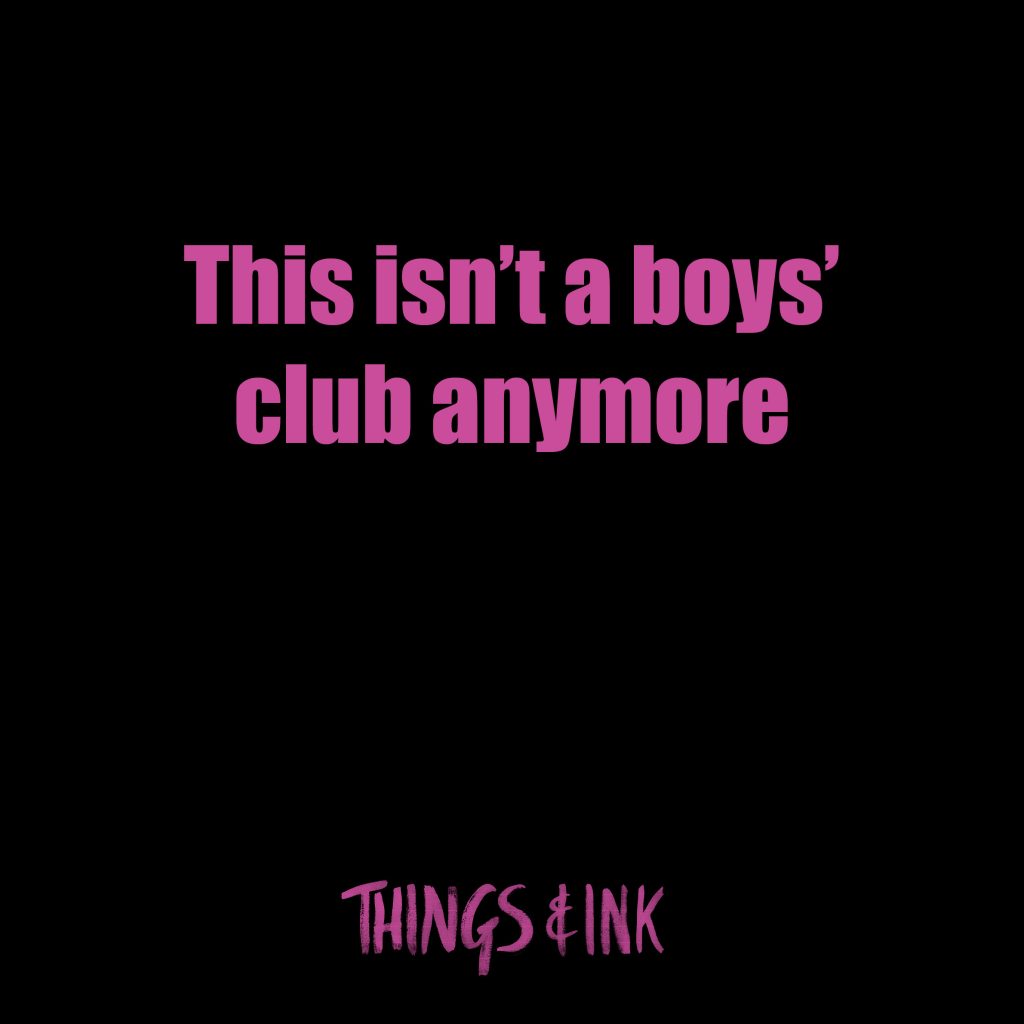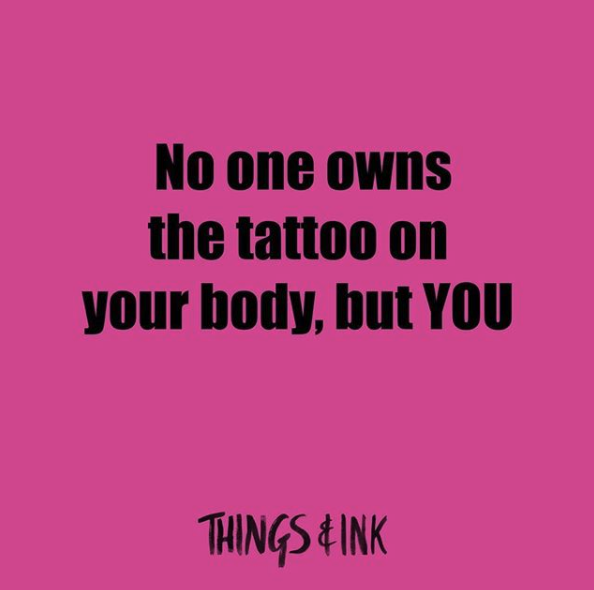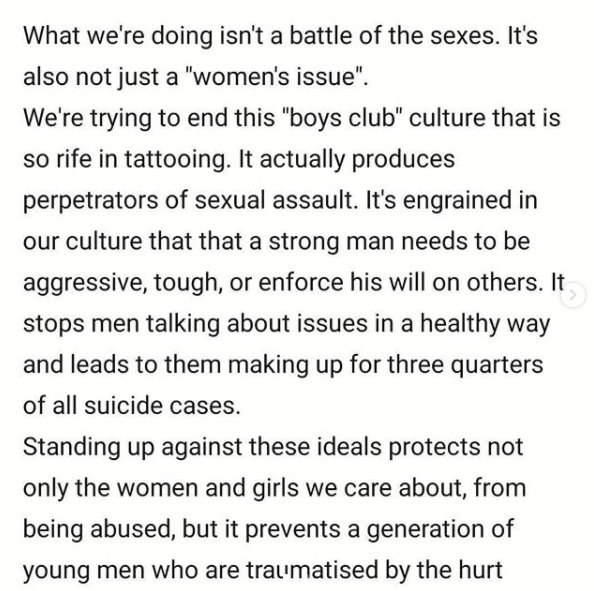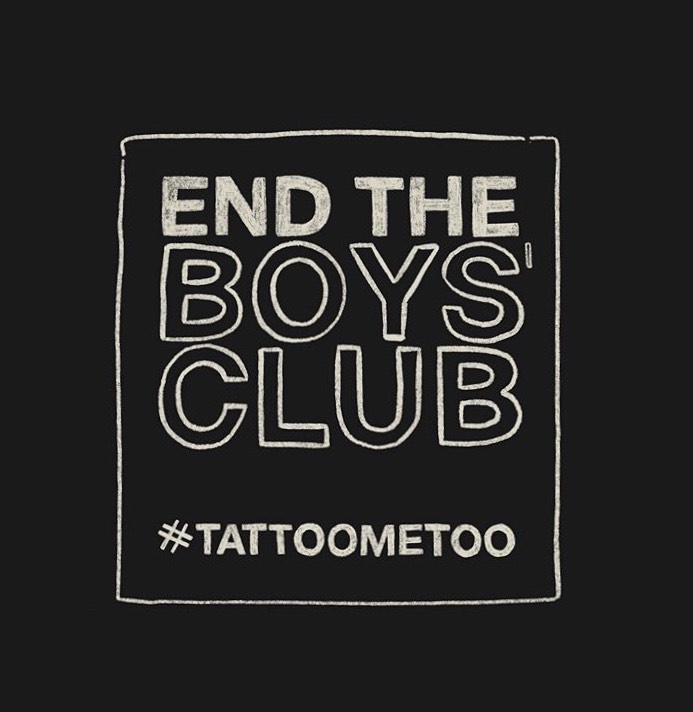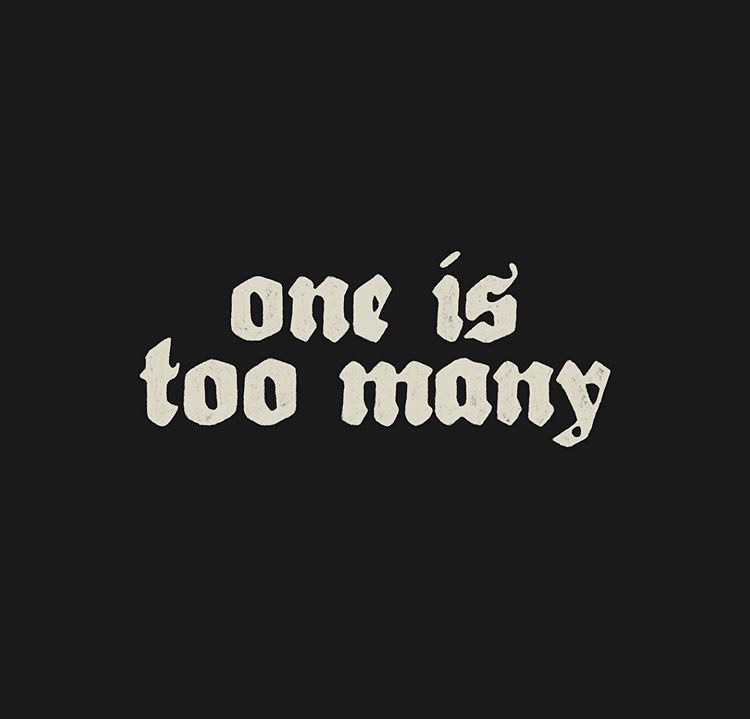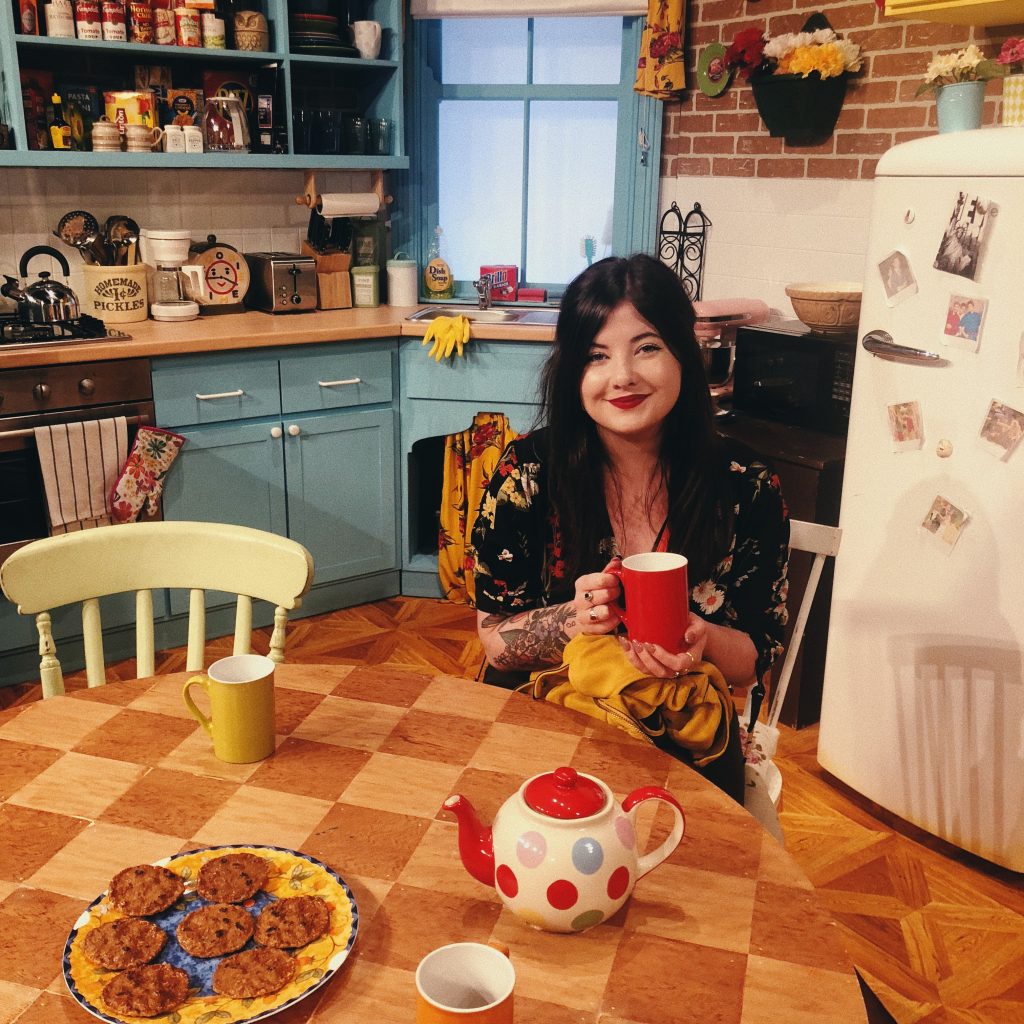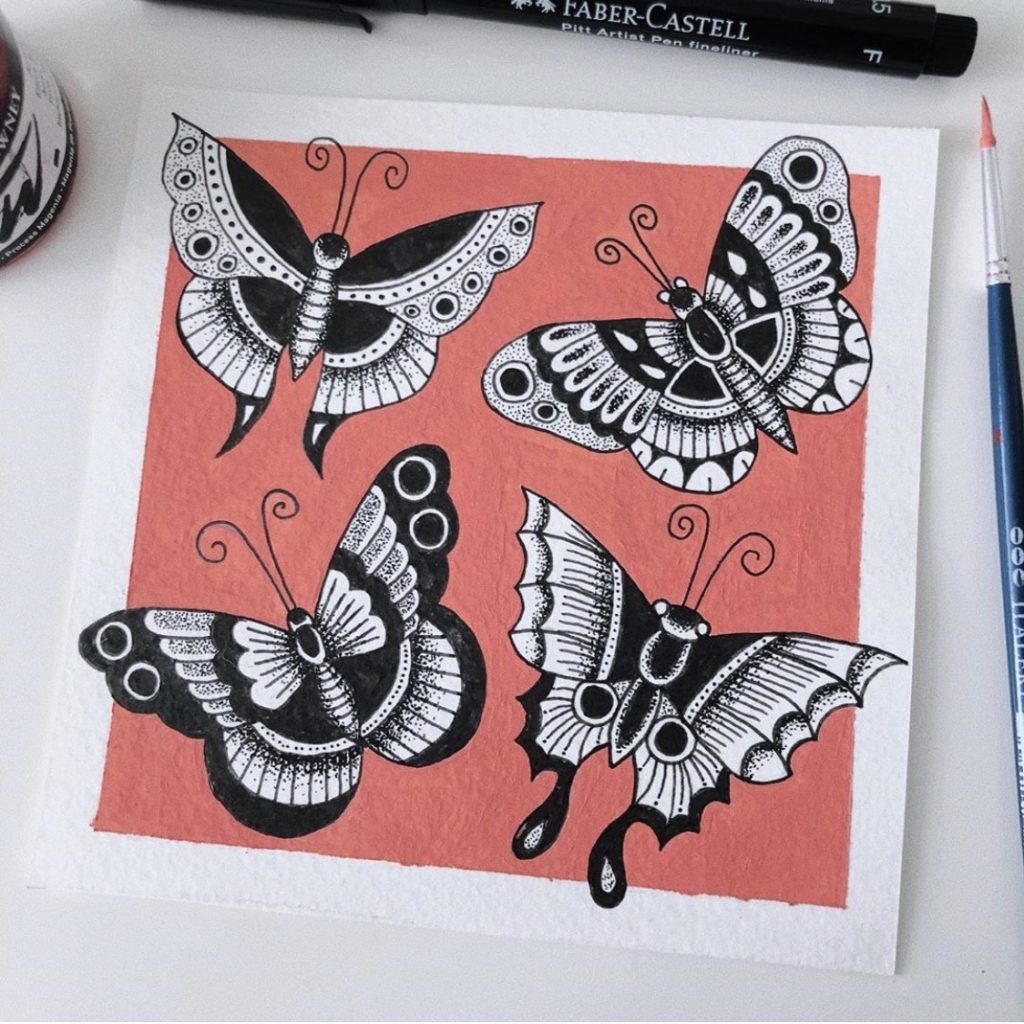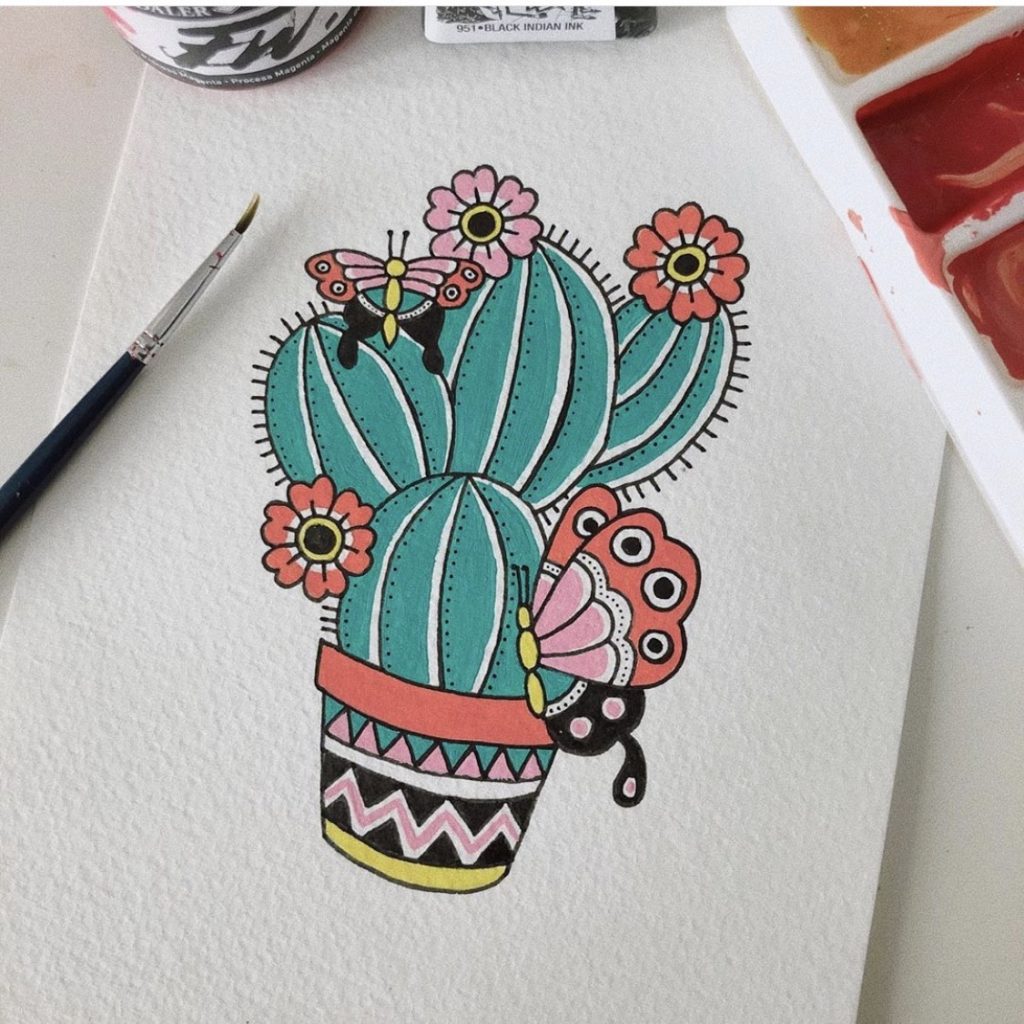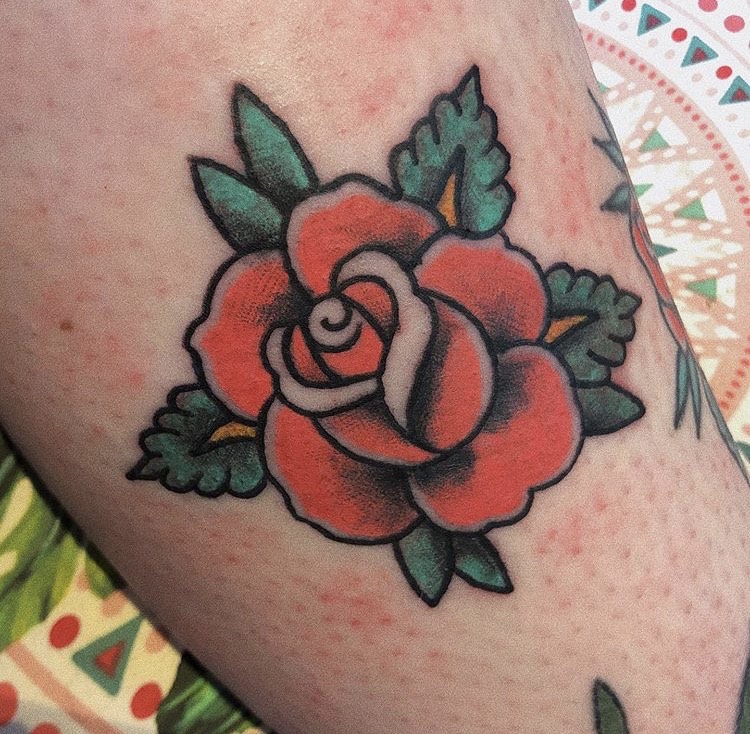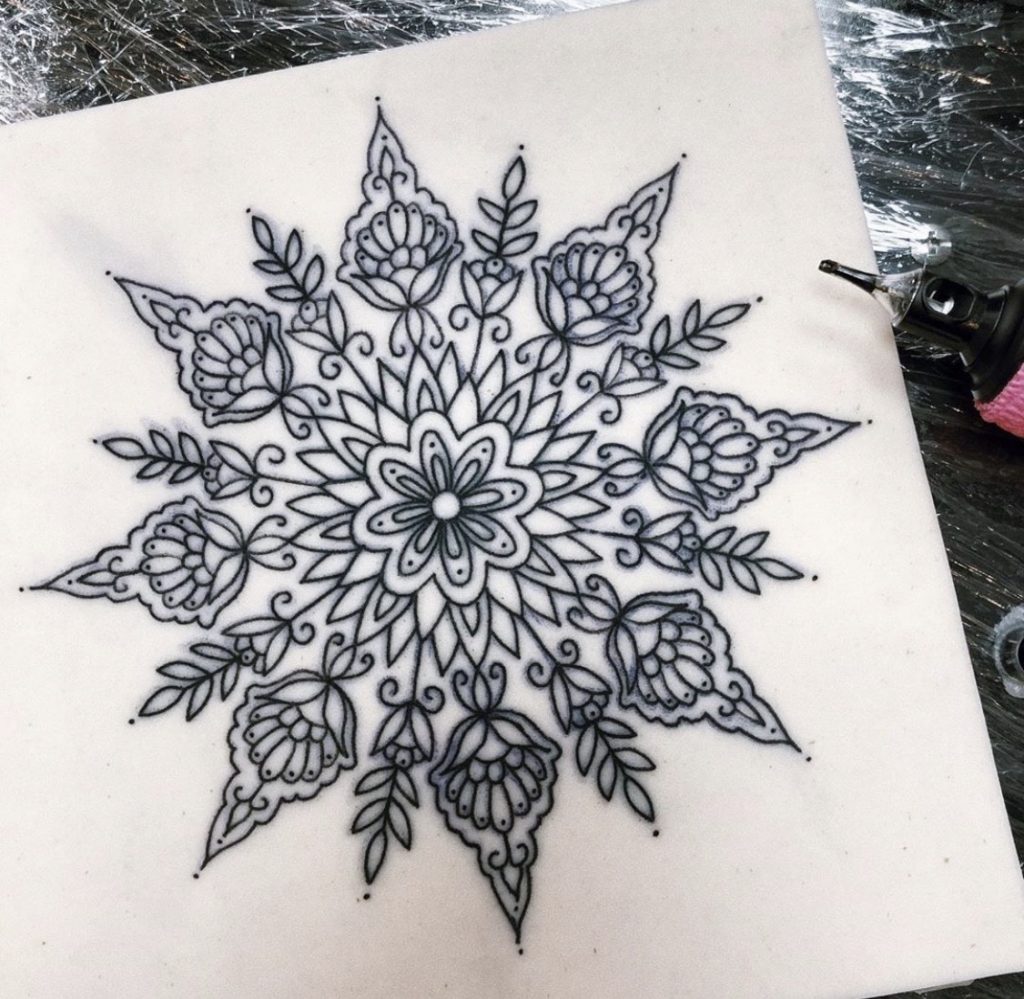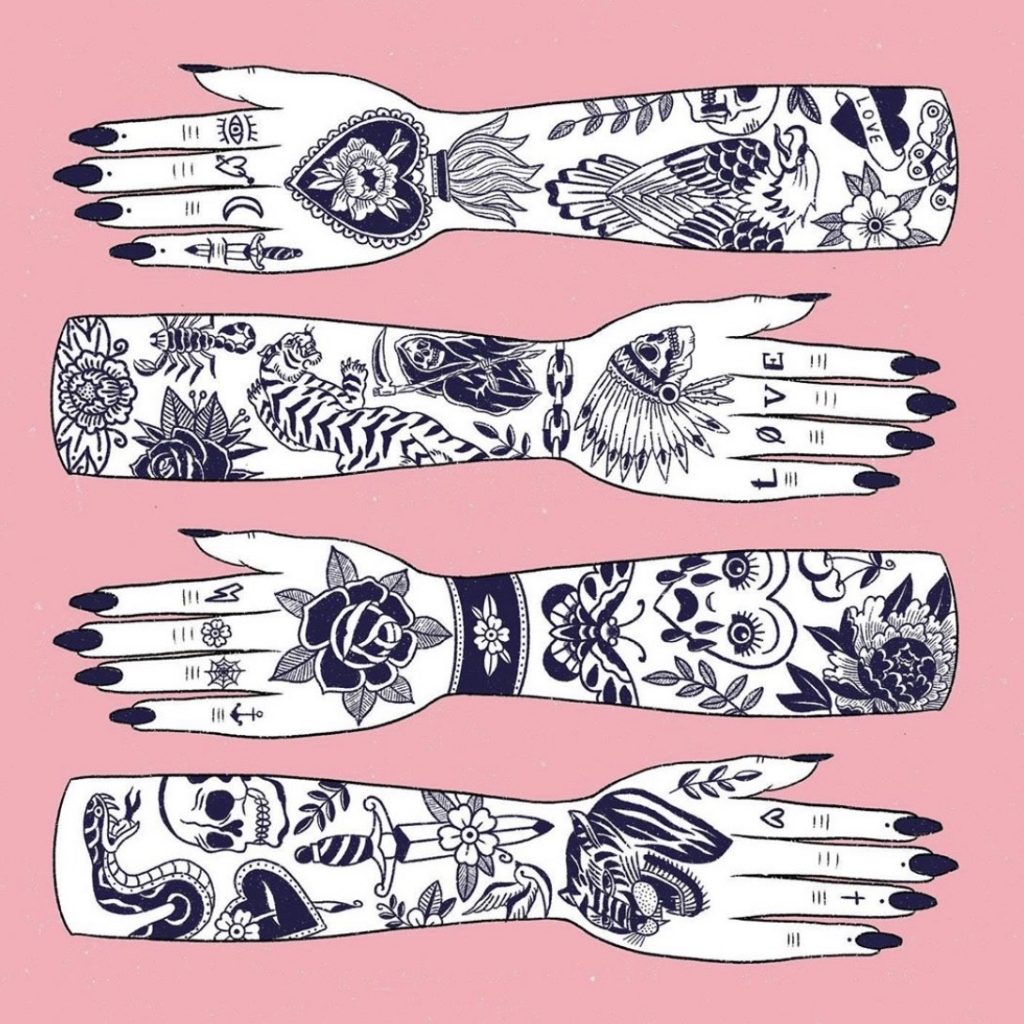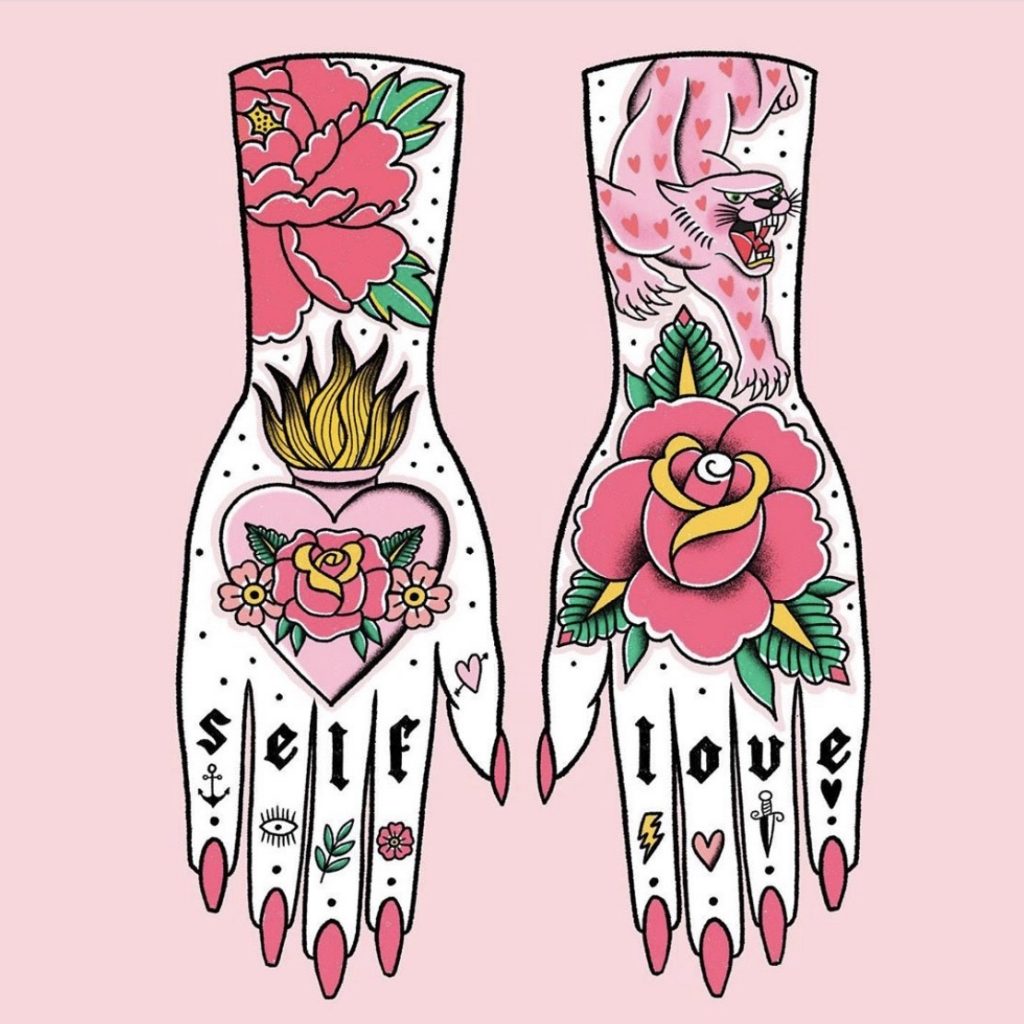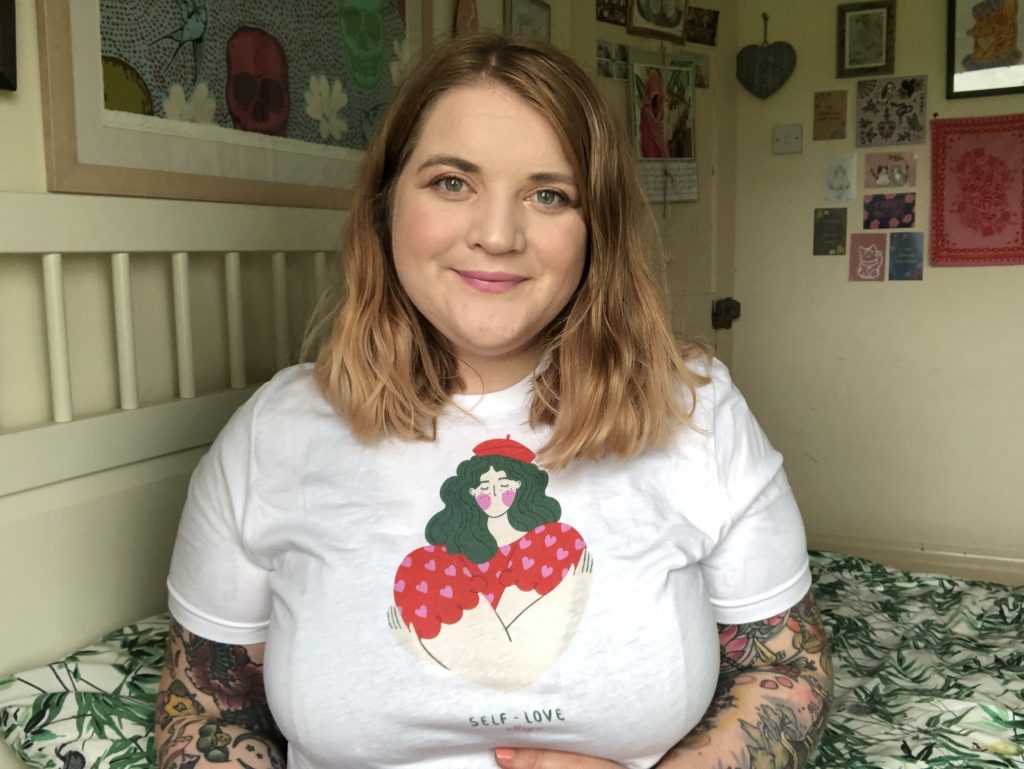Laura ‘LAET’ Taylor creates sensationally beautiful tattoos at Sri Yantra Tattoo, Oakland California. We chat to the artist about her craft and inclusivity within the tattoo world…
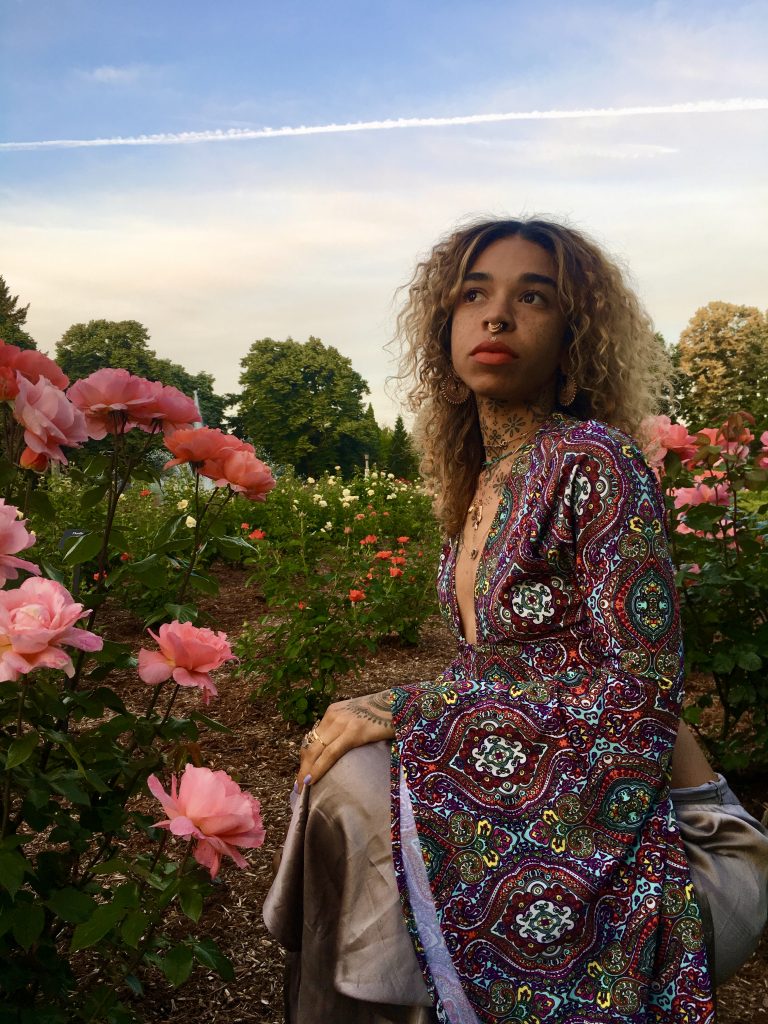
You describe yourself as a skin seamstress, can you tell us a more about this? I started using my mother’s sewing machine at around five years old. One day, she sat me down in front of her sewing machine, and as I picked up the machine technique, I discovered that I found machine sewing enjoyable. I would make quilts and clothes, little projects that grew into big projects, experimenting with a variety of fabrics and bold colours as I went along.
Fast forward 15 years, I went to Central Saint Martins school of Art and Design in London, a place that celebrates courageous free-thinkers and creative innovators. Going to that art school was a game changer for me. I felt seen by the staff and inspired. Being at CSM made me realise my passion for textiles was a legitimate endeavour, as I saw the same spark amongst the textiles students. I studied illustration there, and was able to work on my draftsmanship. I’ve always been looking for a creative space that combines my love of drawing and technical sewing with textiles. Tattooing has become that space for me. The intricacies of my tattoo designs often feel like embroidery as I am constructing them, and so the term ‘Skin Seamstress’ came to mind and has stuck with me.
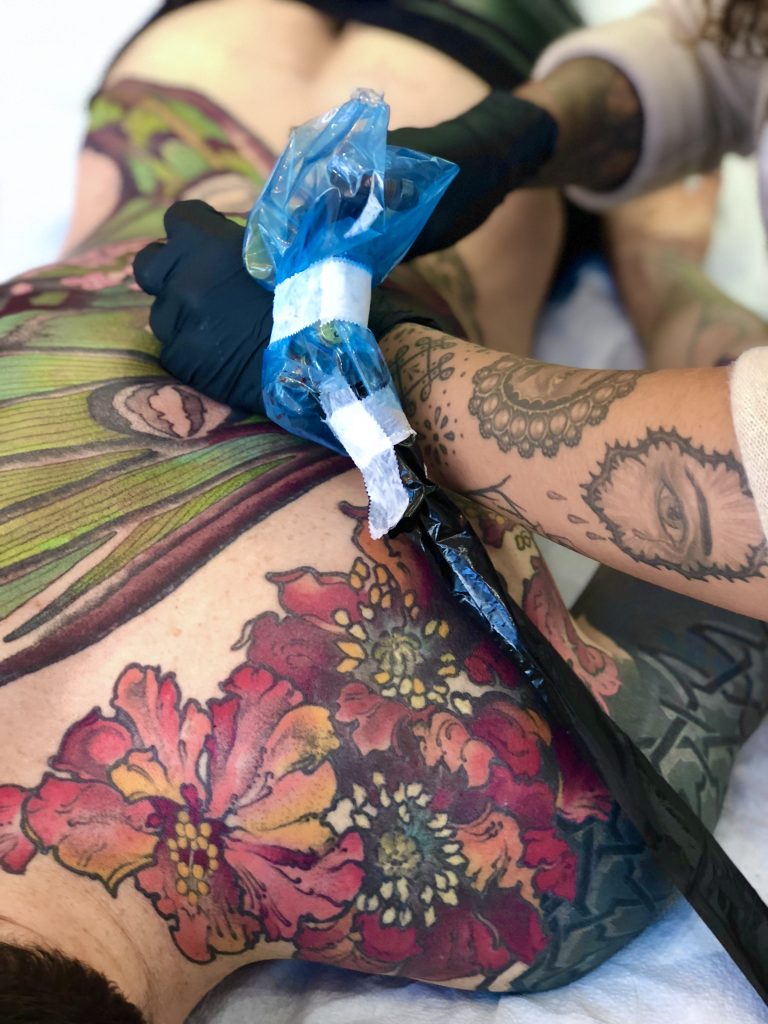
How long have you been tattooing and what drew you to the industry? This year (2020) will be my 18th year in tattooing. It’s a pretty surreal feeling. I’m in my 30s and I’ve already been tattooing for over half of my life. It’s weird. I’ve been tattooing for far less time than a lot of folks, but a lot longer than others. Enough time to see enormous shifts and passing trends.
I’d say I prefer the way things are headed. A little more conscious, a bit more inclusive. It keeps the bar high, with artists producing higher quality work along with happier clientele.
The experience that drew me to tattooing was the first time I saw a tattoo on a person. It was the ’90s era of London, England, outside the Commonwealth Institute on Kensington High Street. I saw a woman walking towards me on the street. She had a huge red mohawk, fully sleeved up, and Doc Martens. She owned that road with her presence, and her confidence shone. I was four years old. I decided right there and then that I would tattoo.
How would you describe your experiences as woman tattooer, especially in the light of recent events within the industry? I would say that things have improved, slowly but surely. The industry is witnessing shifts as the cultural conversation progresses and society moves forward. Being a woman in this industry used to put you in a minority group, but equally that gives you more chance to make a difference and lead for the change you’d like to see. I believe in equality, I believe we are getting there one conversation at a time. I see changes and I remain hopeful, and as always, empowered.
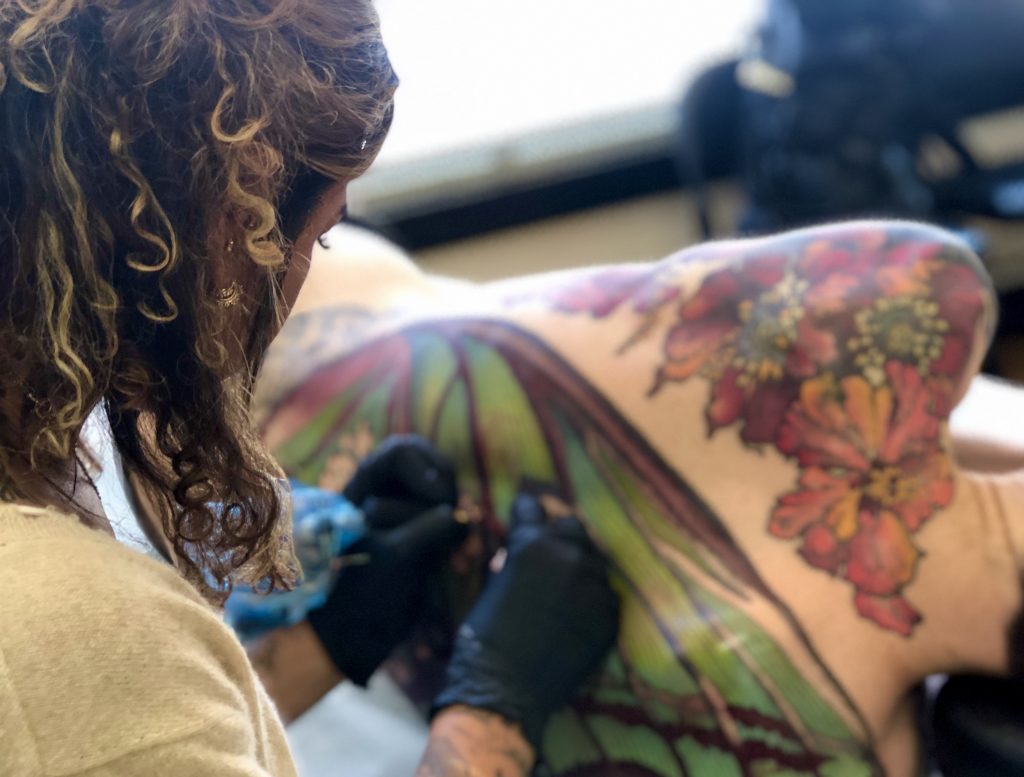
What does tattooing mean to you? Both the work you create and the tattoos on your own body. Freedom. Tattooing is freedom to me. Artistic expression and freedom. Something worth striving for. A great aspect of tattooing is the ability to travel with your job. Tattooing opened up opportunities for me to move to the United States, and develop my skills in more depth. The work I create is heavily influenced by my love of textiles and nature. People will ask me for my flowers, which I will never tire of! Nature is a brilliant resource and teaches us so much.
I personally have a collection of blackwork from about 15 different artists from the UK and the states. Some is ornamental blackwork, some is very gothic blackwork, some is dotwork, and some is punk style/prison style blackwork.
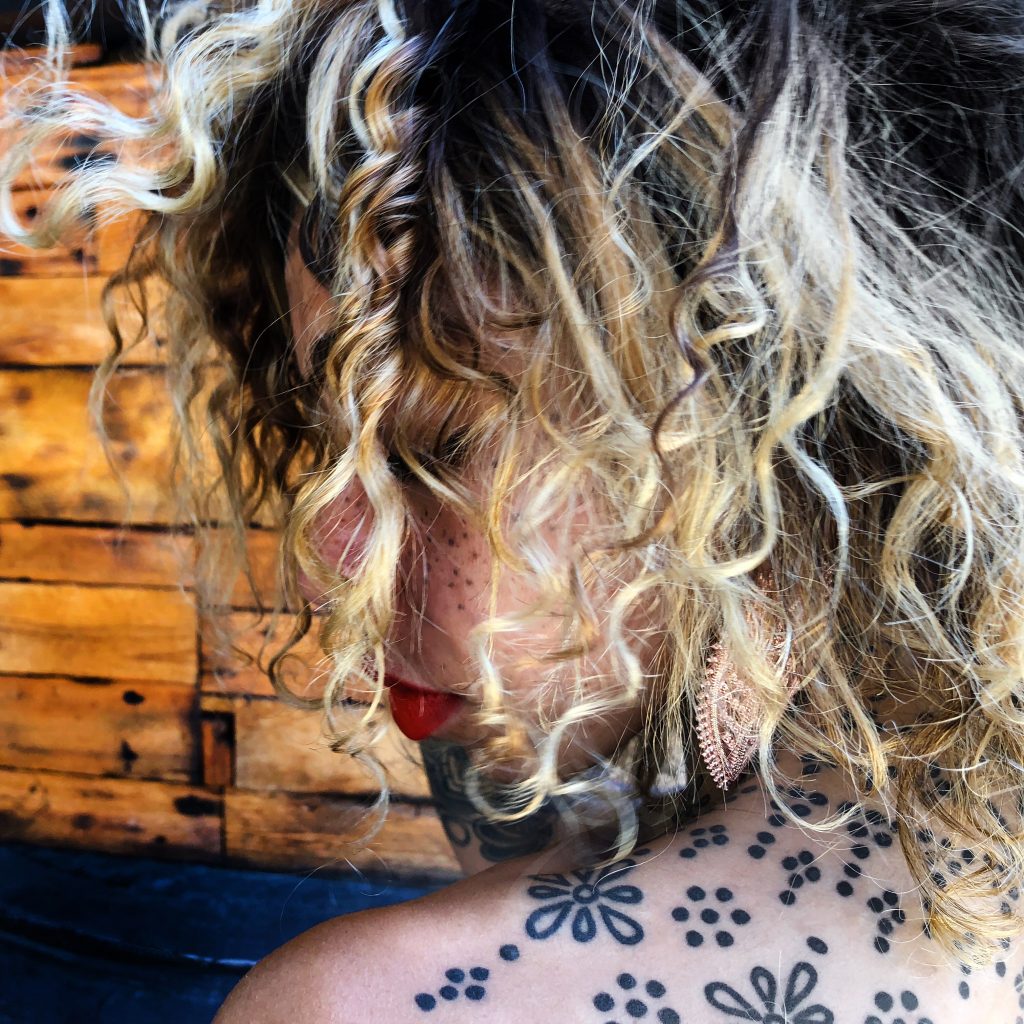
How would you describe your style? What inspires your creations? My style is intricate and detailed for sure. Clients will approach me asking for large-scale pieces, and to keep things intricate. I’d say this is where my seamstress tendencies come into action; often my tattoos look like textiles on skin. I am inspired by my biracial heritage too. I grew up in a British multi-racial household with a variety of vibrant cultures surrounding me. I try to allow this to flow through me into my work.
What do you love to tattoo and what would you like to do more of? Nature is always going to be a favourite theme for me. It offers up endless possibilities. I’m always down to tattoo floral tattoos.
Growing up in London, I felt the medieval and gothic architecture of the city calling me. I’m a Camden Town goth chick for sure, and spent a lot of time in the London goth scene as a teenager. Over the years I can see those style tendencies come through in my work. So anything gothic will always speak to me personally.
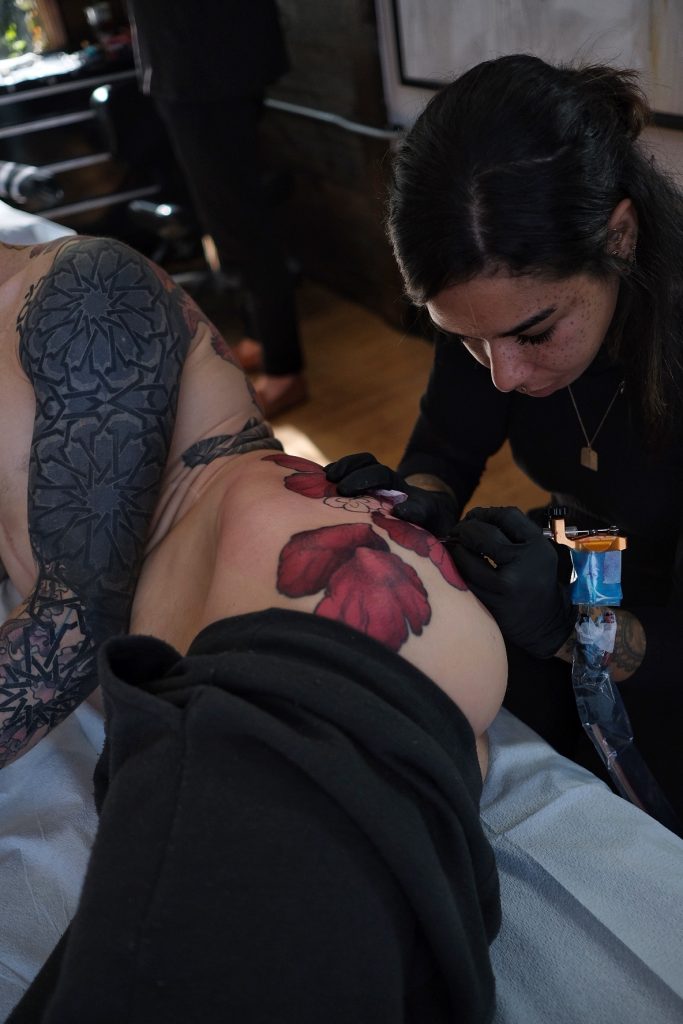
We love your rich, opulent colour palette, do you prefer to work in colour or black and grey, or is this like choosing a favourite tattoo – impossible? Tough question! When I tattooed in London, I was known for gothic ornate blackwork. Clients would mainly ask me for black and grey. I was expanding on the celestial style sun and moon pieces I like to do, and I’d tattoo a lot of depictions of tarot cards. Once I started travelling to the states, I’d already done some vibrant pieces. Mainly tattoos of brightly coloured peonies or chrysanthemums. I started receiving a lot more interest in my colour work, once I came to the States. I guess the colour thing really took off. It’s pretty cool, looking back on that, to think about how much my colour style blew up, even after I was known for a completely different style.
We’ve heard than many tattooers may often refuse to tattoo dark skin, is this something you have experienced? If you do not know how to tattoo all skin tones within society, you do not know how to tattoo. So you’d better learn. Tattoos look brilliant on black and brown skin tones. If you don’t know how to display your work on these tones, you are missing out.
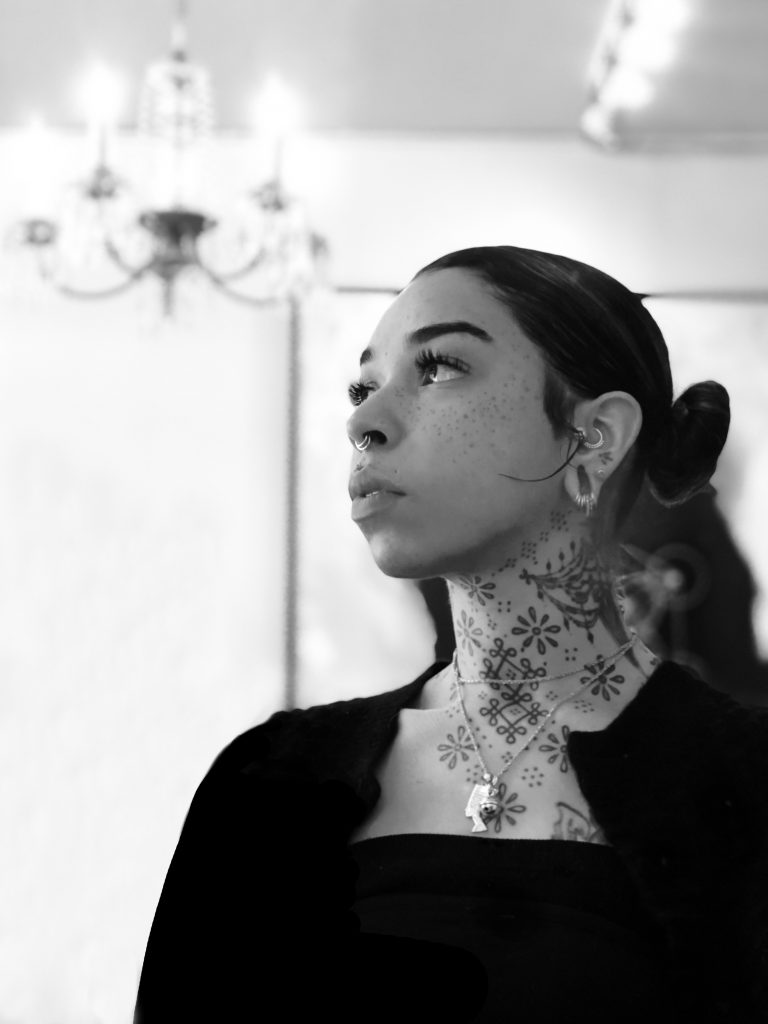
How can we make the tattoo scene more inclusive? What changes would you like to see, do you have any advice for black artists? I think that some important steps forward are being made. I don’t believe overall that tattooing is the racist place it used to be. Tattooing reflects society, and as society continues to be diverse, so should tattooing. Accepting this, is a simple but huge step forward. I would encourage any black artist with a passion for the craft to get involved. It is hard work, you must be committed, but it is also a birthright and something to be very proud of.
Is it important that we call out cultural appropriation when we see it? How can people who profit from this turn things around? I’ve been watching cultural appropriation get worse (especially in England, as we are not taught about our colonial empire building heritage) I used to think it was not important, but now I’ve seen where it has lead us, and as the cultural conversation progresses I’d like it to be more considered. Just think about the marginalised cultures that do not benefit. Tattooing is alive within society, we exist because of our diverse clientele, and I would like to see tattooing reflect and be respectful to that.
